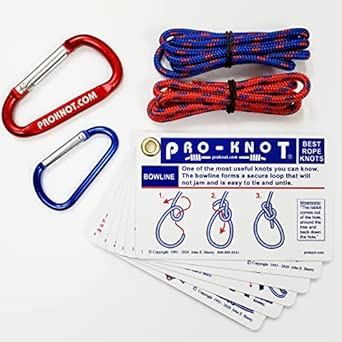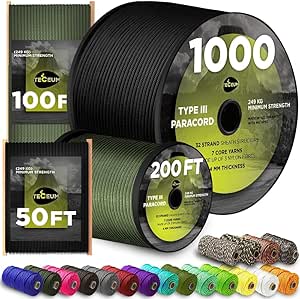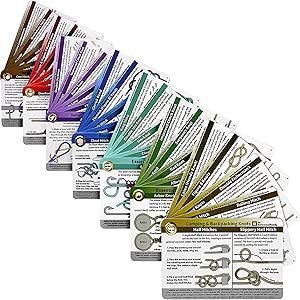Mastering Knot Tying: A Survivalist’s Guide to Navigating the Ropes

Mastering Knot Tying: A Survivalist’s Guide to Navigating the Ropes
The Importance of Knot Tying in Survival Situations
Why Knots Matter
In survival and tactical scenarios, the ability to tie a secure knot is as crucial as finding water or making fire. Knots are the unsung heroes of the wilderness, enabling you to:
- Construct shelters
- Set up traps
- Repair equipment
- Administer first aid
Understanding which knot to use and how to tie it effectively can significantly impact your chances of survival and operational success.
Types of Knots for Different Scenarios
There are knots for every conceivable situation. Examples include:
- The sturdy square knot for joining two ropes of equal thickness
- The adjustable taut-line hitch perfect for securing tarps without slipping
The choice of knot depends on the task at hand – whether you need a non-slip loop for a rescue line or a simple overhand knot for a quick fix.
Learning the Ropes
Mastering knot tying doesn’t happen overnight. It requires practice, patience, and a willingness to learn from mistakes. Start with the basics, gradually moving to more complex knots. Use different types and thicknesses of ropes to understand how knots behave under various conditions. Remember, the best way to learn is by doing, so keep practicing until your hands remember the motions even in the dark.
Key Factors to Consider When Tying Knots
Rope Selection
The type of rope can significantly affect the efficacy of a knot. Considerations include:
- Natural fibers like hemp may offer a rustic charm but can weaken over time, especially when wet.
- Synthetic ropes are durable and resistant to water, but can be slippery.
Assessing the task and environment will guide your rope selection, balancing between strength, flexibility, and usability.
Knot Strength and Security
Not all knots are created equal. Some are designed for easy untying, while others are meant to hold under heavy loads. Knowing the breaking strength and security of a knot is vital, especially in situations where failure could result in injury or worse. Understanding the balance between a knot’s complexity and its strength will aid in choosing the right knot for the right situation.
Environmental Considerations
Environmental factors play a crucial role in knot tying. Weather conditions, such as rain, snow, or extreme temperatures, can affect a rope’s texture and knot integrity. Similarly, the presence of mud, sand, or salt can alter a rope’s friction, necessitating adjustments in knot techniques. Adapting to these conditions is a testament to a survivalist’s skill and preparedness.
Practical Applications of Knot Tying
Shelter Construction
One of the most critical survival skills is the ability to create a shelter. Essential knots for this task include:
- The tripod lashing for framing
- The tensioning hitch for securing tarps
These knots not only need to be strong but also adjustable, as environmental conditions change.
Securing Equipment
Whether you’re hiking, camping, or in a tactical situation, securing your equipment properly can prevent loss and damage. Key knots include:
- The clove hitch and the bowline for attaching gear to backpacks, vehicles, or even animals
Learning to tie these knots quickly and efficiently ensures that your essentials are always within reach.
Emergency and First Aid
In emergencies, the right knot can make a difference. Examples include:
- The double fisherman’s knot for joining ropes for a rescue operation
- The simple surgeon’s knot for bandaging
Being able to apply these knots under pressure is a testament to your skill and readiness for any situation.
Knot tying is a fundamental skill that transcends its practical applications, embodying the essence of preparedness and adaptability. As we delve further into the nuances of this art, remember that each knot tied is a step closer to mastering your environment, regardless of the challenges it may present.
Advanced Knot Techniques for Various Environments
Adjusting Knots for Wet Conditions
In wet conditions, certain knots can slip or become difficult to untie. The bowline, known for its reliability, becomes even more critical in these scenarios. When tying a bowline in the rain or on a wet rope, make a slight modification by adding an extra turn inside the loop before completing the knot. This increases friction and prevents slipping, ensuring the knot holds securely even when the rope is soaked. Practicing this technique beforehand prepares you for sudden downpours or crossings through water bodies.
Knots for High Wind and Cold Weather
High winds and cold weather add another layer of challenge to knot tying. Essential knots for these conditions include:
- The double fisherman’s knot and the figure-eight follow-through
The double fisherman’s knot, used for joining two ropes securely, won’t come loose even when whipped by strong winds. For climbers or those needing to secure gear, the figure-eight follow-through offers unmatched security and ease of inspection, crucial when every second counts, and gloves make dexterity difficult.
Utilizing Natural Materials for Binding
Sometimes, you might find yourself without enough rope or in need of improvising with what nature provides. Vines, long grasses, or strips of bark can be twisted or braided to form makeshift ropes. When using these materials, simple knots like the square knot or the clove hitch are your best bet. They require less precision and can be easily secured and adjusted as needed. This knowledge can be a lifesaver when rope is scarce, and you need to construct shelter or create tools on the fly.
Crafting Tools and Weapons with Knots
Creating a Survival Bow
A survival bow can be a critical hunting or defense tool. To construct one, you’ll need a strong, flexible branch and a cord for the bowstring. The bowline knot is perfect for securing the bowstring at each end of the branch, providing a non-slip loop that maintains tension. The key is to ensure the knot is tied tightly against the branch to prevent slippage, which could reduce the bow’s effectiveness or cause injury.
Fashioning Fishing Gear
With some line and a little ingenuity, you can create effective fishing gear. The palomar knot is excellent for tying hooks, lures, or swivels to your line, offering over 95% strength of the line itself and being relatively easy to tie, even with cold or wet hands. For a makeshift fishing net, the sheet bend knot can join netting or even pieces of cloth. By understanding these knots, you can increase your chances of securing food in a survival scenario.
Improvised Weapons and Tools
Beyond bows and fishing gear, knots can play a pivotal role in constructing other survival tools and weapons. Whether you’re making a spear by affixing a knife to a pole with a constrictor knot or creating traps for small game using slip knots, the versatility of your knot knowledge can significantly expand your survival toolkit. Each of these applications not only requires knowing how to tie the knots but also where and when to use them for maximum effectiveness.
Navigating and Marking Terrain with Knots
Wayfinding with Knots
In dense forests or vast open landscapes, getting lost is a real danger. By tying knots at regular intervals in rope or marking trees with specific knots, you can create a breadcrumb trail to find your way back or signal your path to rescuers. The alpine butterfly knot is perfect for creating loops in a rope without having to access either end, allowing you to attach markers or items at intervals. This method of wayfinding is simple but effective, ensuring you can always retrace your steps.
Marking Safe and Dangerous Areas
Knots can also serve as visual markers to denote safe passages or danger zones. For example, a series of square knots might indicate a safe path, while a sequence of figure-eight knots could signal hazardous areas. This system of communication can be invaluable in group survival situations, ensuring all members understand which areas have been scouted and deemed safe or dangerous. It’s a primitive but effective way to maintain safety and cohesion among groups in unfamiliar territories.
As we delve deeper into the world of advanced knot tying, it’s clear that the applications are as varied as they are vital. From adjusting techniques based on environmental conditions, crafting essential survival tools, to using knots as a means of navigation and communication, the skill of knot tying is indispensable.
Advanced Knot Tying in Rescue Operations
High-Stress Knot Tying Techniques
In rescue scenarios, time is of the essence, and the ability to tie knots quickly and efficiently can mean the difference between life and death. The one-handed bowline is a prime example of a knot that can be tied swiftly, even with one hand, making it invaluable for self-rescue or when assisting others. To master this, start by practicing the bowline with your dominant hand, then gradually speed up the process until you can perform it without hesitation. This skill is particularly useful if you’re injured or need to maintain a grip with one hand while securing a rope with the other.
Improvising with Limited Resources
Rescue situations often mean working with what you have on hand, which might not always be ideal. Learning to utilize unconventional materials like belts, fabric strips, or even shoelaces can save lives. The key is understanding the principles of knot strength and security, regardless of the material. Practice tying essential knots with various improvised materials to prepare for any eventuality. This adaptability will enhance your ability to perform under pressure, ensuring you’re ready for unforeseen challenges.
Knots for Vertical Rescues
Vertical rescues require knots that can bear loads and be easily managed. The Munter hitch, combined with a mule knot, is crucial for creating a secure, adjustable system for lowering or raising victims. It’s vital to practice these knots in controlled environments to ensure proficiency. Additionally, setting up a z-drag system using the prusik knot for mechanical advantage is a technique that can significantly aid in difficult rescues, allowing for the efficient movement of heavy loads with minimal effort.
Expert Tips for Advanced Knot Tying
Maximizing Knot Efficiency
For those looking to elevate their knot-tying skills, understanding the concept of ‘dressing’ a knot is crucial. A well-dressed knot is compact, neat, and has its parts aligned properly, which not only enhances its strength but also makes it easier to untie. Regularly inspect and adjust your knots, especially in dynamic situations where the load or environmental conditions can change. This attention to detail can significantly improve the performance and reliability of your knots.
Leveraging Knot Combinations
Advanced scenarios often require a combination of knots to achieve the desired outcome. For example, using a bowline to create a fixed loop, then employing a trucker’s hitch to apply tension, offers a versatile and secure system. Experimenting with different knots and understanding how they can complement each other opens up new possibilities for problem-solving and innovation in the field.
Continuous Learning and Adaptation
The world of knot tying is vast and ever-evolving. Engage with communities of climbers, sailors, and survival experts to stay updated on new techniques and applications. Participating in workshops or courses can also provide hands-on experience and feedback from seasoned professionals, helping you refine your skills further.
For those committed to advancing their knot-tying abilities, the next steps involve consistent practice, seeking out new learning opportunities, and applying your skills in practical scenarios. Consider creating a knot tying journal to document your progress, new knots learned, and insights gained from each experience. Additionally, exploring resources such as books, online forums, and tutorial videos can provide fresh perspectives and techniques to incorporate into your repertoire.
In conclusion, the art of knot tying is a fundamental skill that enhances safety, efficiency, and effectiveness in a multitude of scenarios. Whether for survival, tactical situations, or rescue operations, the knots we tie connect us not only to our gear and environment but to a centuries-old tradition of craftsmanship and ingenuity. By continuing to learn and adapt, you ensure that this vital skill set not only endures but evolves, preparing you for whatever challenges lie ahead.
Compare Products
Now that you’ve grasped the critical role of knot tying in survival situations, from constructing shelters to securing gear, it’s time to equip yourself with the right tools. The Knot Tying Kit and Pro-Knot Best Rope Knot Cards offer a hands-on learning approach with practice cords and a carabiner, while the TECEUM Paracord Type III 550 Black provides a durable, versatile rope for practical application in the field. These products are specifically designed to enhance your skills and ensure you’re prepared for anything the wilderness throws your way.
By comparing these options, you can identify which product best meets your survival and tactical needs. Whether you’re a visual learner who benefits from step-by-step guides like the Knot Tying Kit and Pro-K
| Feature / Product | Knot Tying | TECEUM Paracord | Complete Knot |
|---|---|---|---|
 |
 |
 |
|
| $23.11 | $42.99 | $82.78 | |
| Shop now → | Shop now → | Shop now → | |
| Specifications | |||
| Brand | N/A | TECEUM | ReferenceReady |
| Weight | N/A | 220 Grams | N/A |
| Dimensions | N/A | N/A | 14.2 x 8.79 x 4.09 cm; 240 Grams |
| Material | N/A | Nylon | Plastic |
| Capacity | N/A | N/A | N/A |
| Efficiency | N/A | N/A | N/A |
| Waterproof | N/A | N/A | Yes |
